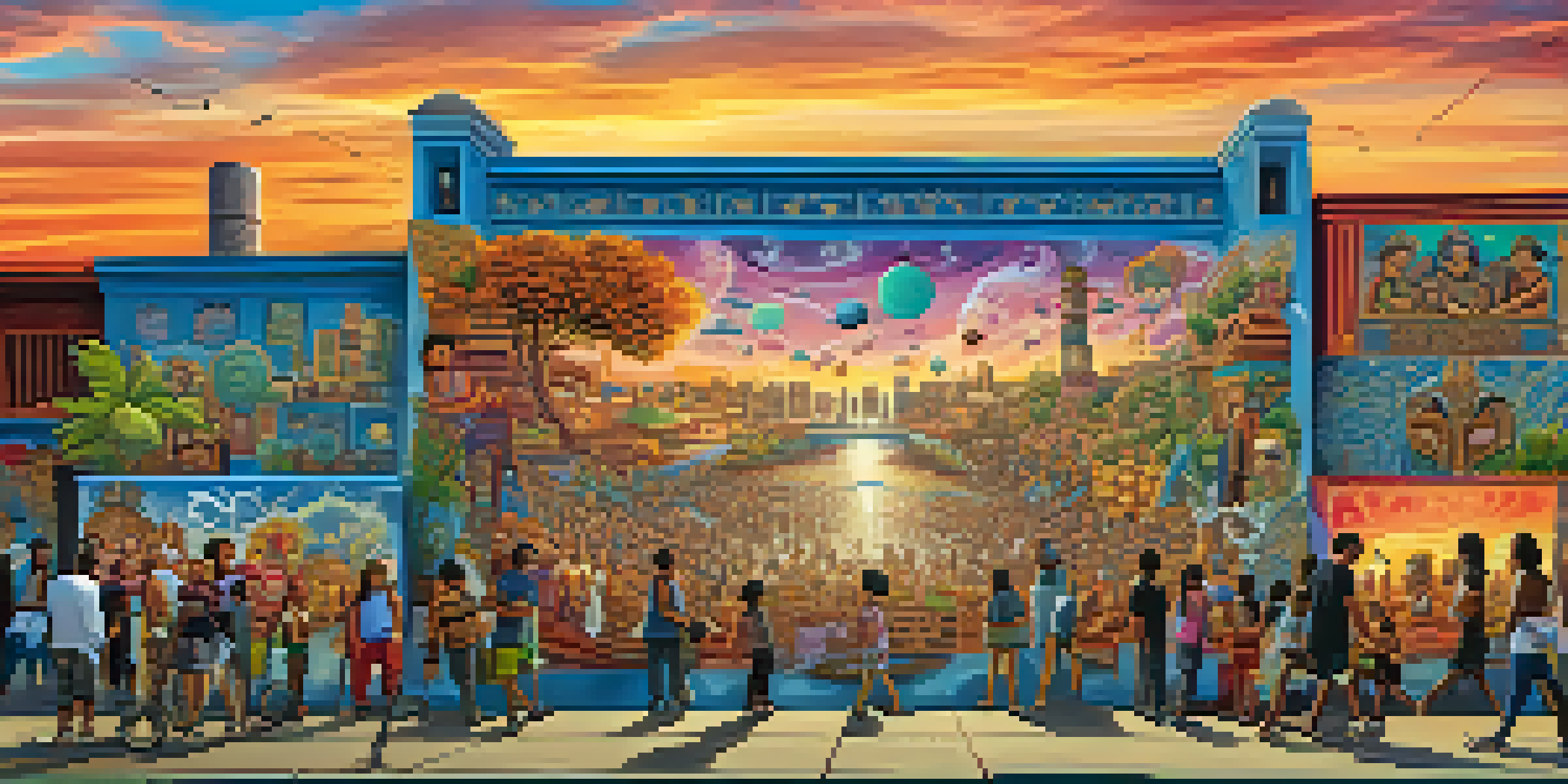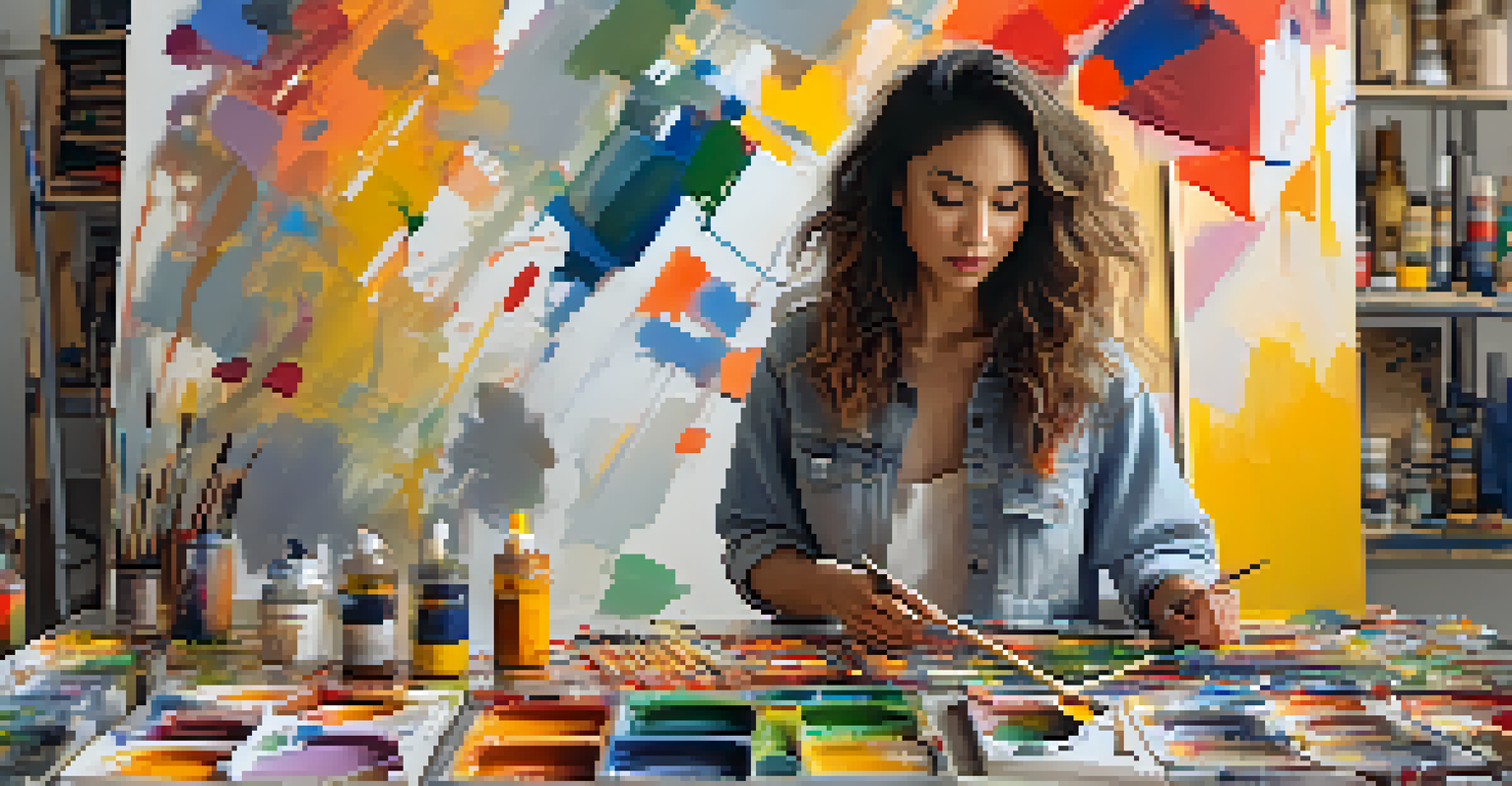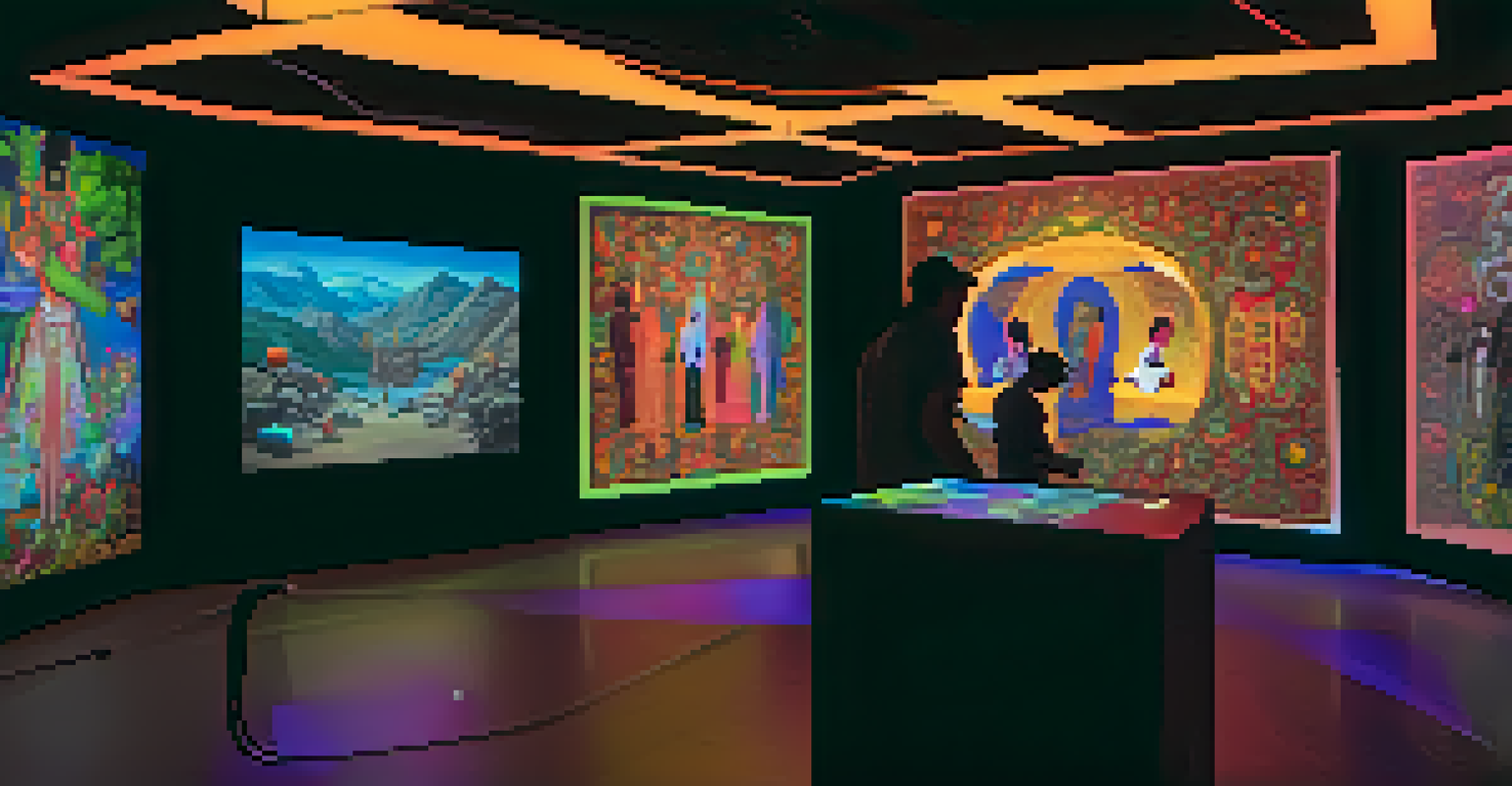Art and Identity: Globalization's Role in Cultural Expression

Understanding Art as a Reflection of Identity
Art has always been a mirror reflecting the identity of a culture. Through various forms of expression, from painting to performance, artists communicate their experiences and values. This connection between art and identity is essential in understanding how individuals and communities perceive themselves.
Art is a reflection of our identity and our culture, a universal language that transcends borders.
When we look at a piece of art, we often see not just the artist's skill but also their cultural background and personal stories. For example, Indigenous art often incorporates symbols and themes that are deeply rooted in the community's history and beliefs. This makes art a powerful medium for expressing both personal and collective identity.
As globalization continues to influence cultures worldwide, the relationship between art and identity becomes even more complex. Artists now navigate a landscape where diverse influences intermingle, leading to new forms of expression that reflect both local traditions and global trends.
Globalization: A Double-Edged Sword for Cultural Expression
Globalization brings both opportunities and challenges for artists around the world. On one hand, it allows for the sharing of ideas and techniques across borders, fostering innovation and collaboration. An artist in Brazil can easily connect with a counterpart in Japan, leading to exciting new works that blend different cultural elements.

On the other hand, globalization can also lead to cultural homogenization, where unique identities risk being overshadowed by dominant global trends. This phenomenon can dilute the richness of local art forms, as artists may feel pressured to conform to mainstream styles that appeal to a broader audience.
Art Reflects Cultural Identity
Art serves as a mirror for cultural identity, allowing artists to communicate their personal and collective experiences through various forms of expression.
Balancing these influences is crucial for artists seeking to maintain their unique cultural identities while also engaging with the global art scene. The challenge lies in finding a way to honor traditional practices while exploring contemporary expressions that resonate with diverse audiences.
The Role of Technology in Artistic Identity
Technology has revolutionized the way art is created and shared, making it easier for artists to express their identities on a global stage. Social media platforms and online galleries allow them to showcase their work to a wider audience, transcending geographical boundaries. This accessibility can empower artists to share their cultural narratives with the world.
Art enables us to find ourselves and lose ourselves at the same time.
For instance, a street artist in New York can gain international recognition through Instagram, attracting followers who appreciate their unique style and message. This democratization of art allows for diverse voices to be heard, enriching the global art landscape with various perspectives.
However, reliance on technology also poses challenges. The digital world can sometimes prioritize trends over authenticity, leading artists to alter their work to gain visibility. Striking a balance between maintaining one's artistic integrity and leveraging technology for exposure is a common struggle in today's art community.
Cultural Appropriation vs. Cultural Appreciation
As global influences intermingle, the line between cultural appreciation and cultural appropriation can become blurred. Cultural appropriation refers to the adoption of elements from one culture by members of another, often without understanding or respecting the original context. This can lead to misrepresentation and exploitation of marginalized cultures.
On the flip side, cultural appreciation involves engaging with and valuing another culture's traditions and expressions, often through collaboration and respectful exchange. For example, when artists from different backgrounds work together, they can create pieces that honor both cultures, enriching the artistic dialogue.
Globalization Challenges Authenticity
While globalization fosters collaboration and innovation among artists, it also risks cultural homogenization, which can dilute unique artistic identities.
Navigating this delicate balance is essential for artists today. Understanding the historical and social contexts of the cultures they draw from allows for meaningful connections and prevents the pitfalls of appropriation.
The Influence of Migration on Artistic Identity
Migration plays a significant role in shaping artistic identities, as individuals bring their cultural backgrounds to new environments. When artists migrate, they often blend their heritage with the influences of their new surroundings, creating hybrid forms of expression. This fusion can lead to innovative art that speaks to the complexities of identity in a globalized world.
For instance, the works of artists from immigrant backgrounds often reflect a duality of experience—navigating their cultural roots while adapting to a new society. This can be seen in literature, music, and visual arts, where themes of displacement and belonging resonate deeply.
Such narratives not only enrich the artist's work but also foster empathy and understanding among audiences. By sharing their unique perspectives, these artists help to bridge cultural divides and promote a more inclusive appreciation of diverse identities.
Art as a Tool for Activism in a Globalized World
Art has long been a powerful medium for social and political activism, and globalization has amplified its impact. Artists can now use their platforms to address global issues such as climate change, inequality, and human rights. Through their work, they can raise awareness and inspire action on a scale that was previously unimaginable.
For example, murals and installations in urban spaces can become focal points for community engagement, sparking conversations about pressing social issues. Artists like Banksy have used their work to challenge societal norms and provoke thought, demonstrating how art can be a catalyst for change.
Migration Shapes Artistic Narratives
Migration influences artistic identity by blending cultural backgrounds with new experiences, resulting in hybrid forms of expression that resonate with themes of displacement and belonging.
As globalization connects people across borders, the collective power of artistic activism can create a unified voice that resonates worldwide. By standing in solidarity with various movements, artists can contribute to a more just and equitable society, using their creativity to inspire hope and action.
The Future of Art and Identity in a Globalized Context
Looking ahead, the future of art and identity in a globalized world is both exciting and uncertain. As cultural boundaries continue to blur, artists will likely explore new ways to express their identities while navigating the complexities of globalization. This evolution may lead to the emergence of entirely new art forms that reflect a more interconnected and diverse society.
Furthermore, as technology advances, artists will have access to innovative tools that can enhance their creative processes. Virtual reality, augmented reality, and artificial intelligence are just a few examples of how technology will shape artistic expression in the years to come.

Ultimately, the dialogue between art and identity will remain dynamic as artists respond to their ever-changing environments. By embracing their unique voices and experiences, they will continue to forge connections that celebrate the richness of cultural diversity in our global society.